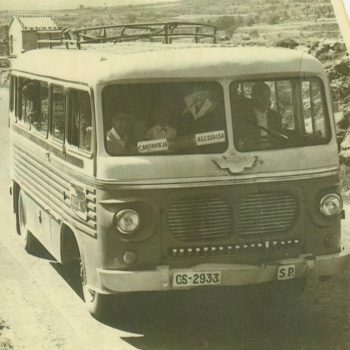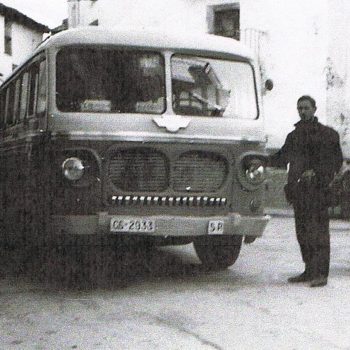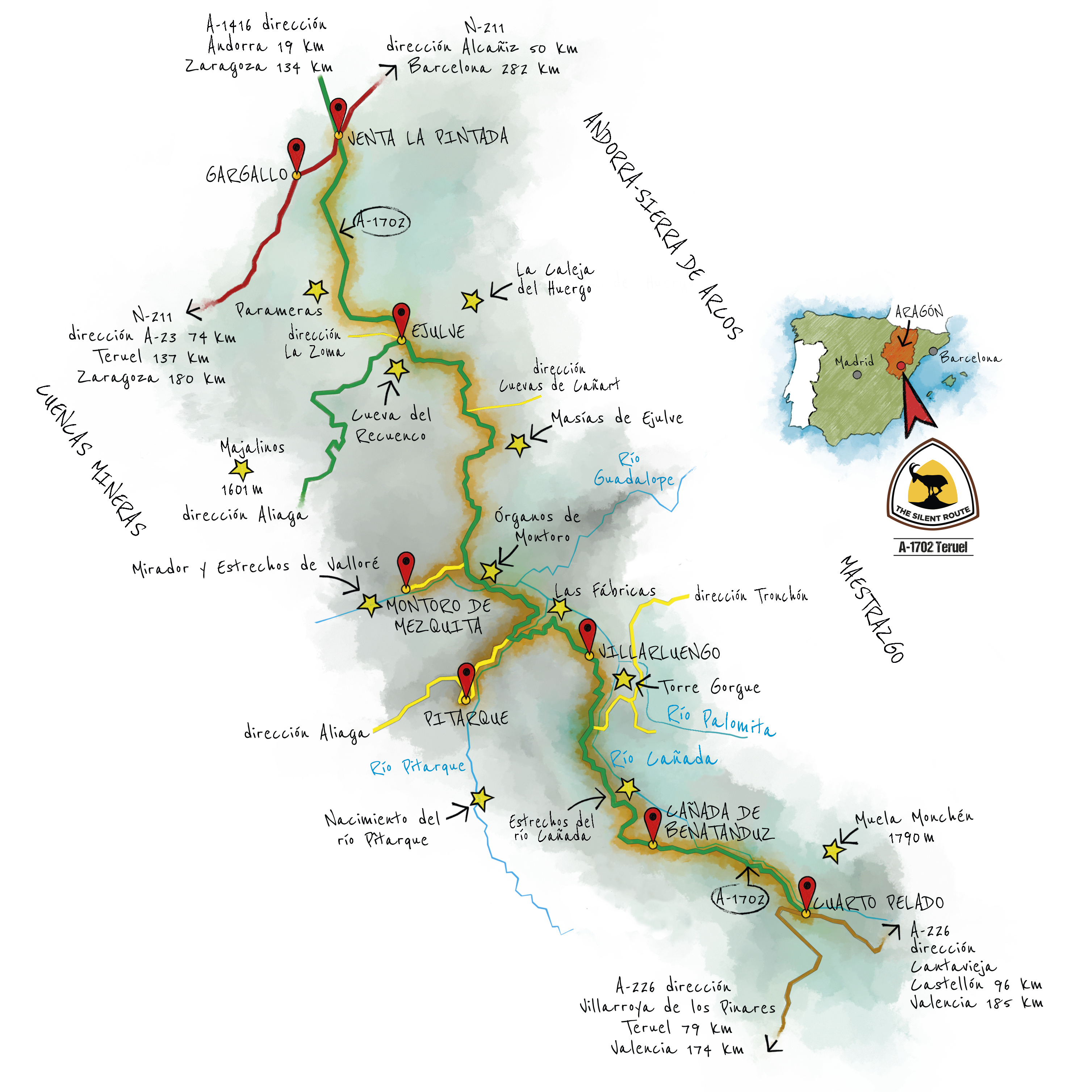In 1944 in the Valley of Arán the operation “Reconquest of Spain” failed, carried out by Spanish republicans who had fought against the Nazisin France. Some of them reached the Iberian mountains to rebuild the resistance against Francoism, forming, together with native guerrillas in April 1946 the Guerrilla Group of Levante y Aragón whose line of action was located in the Maestrazgo.
From that time on, the actions of greater impact were carried out. In February 1948 on the slope of “Los Degollaos” between Ejulve and Montoro, the assault of the line bus that covered the route from Alcorisa to Cantavieja took place, the famous “Caimán”, which covered THE SILENT ROUTE, resulting in a shooting with the pair of the “Guardia Civil” that, as was the case every day, made the journey mixed among the passengers.
The assault on the “Caimán” took place on 17 February 1948. The car travelling between Alcorisa and Cantavieja, was driving along the Villarluengo road and at kilometre 20, in a twist in the Barranco de los Degollados ravine, it had to stop when it came across a pine tree crossed in the road that prevented it from passing. The Guardia Civil couple escorting the car tried to prevent the Maquis assault and, as Juan Gascón explained to Antón Castro in 2005, “…one was immediately reduced and the other managed to escape and got into a sewer”.
The maquis, dislodged the car and proceeded to set fire to it. While this was happening, Antonio Pérez Escorihuela appeared in his private vehicle and became directly involved in the fray. Antonio was a man “close to the regime”, owner of numerous farms and deputy mayor of Villarluengo, and was accompanied by the local practitioner, Antonio Conesa. He was held by the assailants who took him into the bush where they shot him several times, leaving him abandoned, thinking he was dead, after having given him the coup de grâce. The situation in which this man found himself was very dramatic, as he was seriously wounded, without sight, having lost an eye with that last shot, and out in the open on a cold winter’s night. He wandered, disorientated, through the mountains until he was found by a patrol that was following the trail of the “bandits” – a term used by Franco to refer to the Maquis – whose members recognised him and shouted out his name, identifying themselves as well, seeing that Antonio Pérez was trying to flee, thinking that he was once again a guerrilla fighter. They were able to take him to the village where he underwent initial emergency treatment and was later transferred to Zaragoza, where he was admitted to hospital for some time.
He saved his life and according to Jesús Calvo, in one of his writings, “… he boasted of his luck and power by rolling cigars with twenty-five peseta banknotes”. We do not know at this point whether he was a casual protagonist of what happened when he encountered the assault on the “Caimán”, or whether he fell into an ambush organised by the maquis to attack him because of his status as a faithful servant of the regime.
This line continues operating every day from Monday to Friday, and it is still carried out by a bus of the Altaba company, today still called “El Caimán” in memory of that old bus.
More information: (Spanish): Juan Manuel Gascón in http://historiadeejulve.blogspot.com.es/2018/02/



